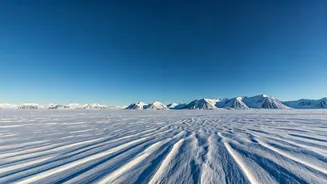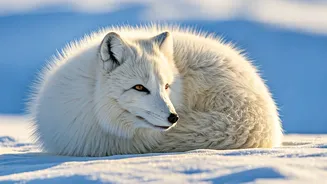Remote Arctic Locations
Svalbard and Jan Mayen, both integral parts of Norway, present a striking contrast to the typical image of the country. Svalbard is a Norwegian archipelago
located deep within the Arctic Ocean, whereas Jan Mayen is a volcanic island in the Arctic Ocean. The environments of both of these territories are defined by the cold climate. While the territories share the common thread of belonging to Norway, their geographies differ greatly. Svalbard consists of several islands, some quite large, offering diverse landscapes, including glaciers, mountains, and fjords. Jan Mayen, on the other hand, is a singular, volcanic island, with a prominent active volcano, Beerenberg. These geological formations are what make these territories unique. Despite their contrasting shapes, both offer a unique experience to those who dare to visit these remote areas, with the chance to experience nature at its most extreme.
Wildlife & Climate Dynamics
The harsh climates of Svalbard and Jan Mayen heavily influence the wildlife that survives there. Svalbard's landscapes are home to diverse wildlife, including polar bears, Arctic foxes, Svalbard reindeer, and various species of seabirds. Polar bears, the iconic symbol of the Arctic, roam the ice and hunt for seals, while the Arctic foxes are masters of adaptation. Svalbard reindeer are uniquely adapted to thrive in these conditions, and seabirds nest along the coastlines during the brief summer months. Jan Mayen has a different set of wildlife. The island is primarily a breeding ground for various seabird species. The climate in both locations is characterized by extreme cold, long winters, and short summers. Seasonal fluctuations greatly affect wildlife behavior, and the ice cover that comes and goes also plays a role in migration patterns. The environment constantly challenges the wildlife, as they must adapt and evolve to survive the cold and hunt for food.
Human Presence & Activity
Despite their remoteness and harsh conditions, both Svalbard and Jan Mayen have a human presence. Svalbard has a permanent population primarily located in the main settlement of Longyearbyen. Historically, the main industry on Svalbard was mining, focusing on coal, but tourism and scientific research are becoming more important. The residents of Svalbard live in a unique environment. They navigate the challenges of the long polar nights, the extreme cold, and the risk of polar bear encounters. Jan Mayen's human population is more limited, mainly consisting of personnel at a Norwegian military base, and a weather station. The primary human activities on Jan Mayen revolve around meteorological observations, monitoring of air traffic, and scientific research. Human activities are carefully regulated to minimize environmental impact, as both territories hold significant ecological value. Preserving the delicate balance of these environments and respecting the unique nature of each location is a constant priority.
Challenges & Conservation
The vulnerability of Svalbard and Jan Mayen stems from their location in the High Arctic. The challenges these areas face are linked to climate change. Rising temperatures and the melting of ice pose severe threats to the ecosystem and the wildlife that depend on it. Rising sea levels and the thawing of permafrost are also concerns. The fragile nature of the Arctic environments requires a commitment to conservation. Norway has taken steps to manage and protect these areas. Environmental regulations and conservation initiatives are in place to safeguard the unique biodiversity of Svalbard and Jan Mayen. The aim is to balance human activities with environmental preservation. International cooperation is also essential, given the global significance of the Arctic's ecosystems and its influence on worldwide climate patterns. Ongoing research and monitoring are vital to understanding the changes and establishing effective conservation strategies.












